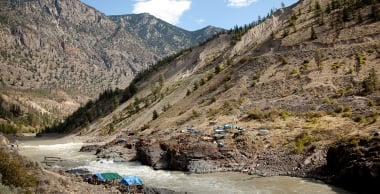Visit: Corporate Site

Indigenous Tourism BC encourages reconciliation through truth-learning and hearing firsthand stories from Indigenous storytellers. We also encourage you to expand your Indigenous canon! Indigenous literature spans all genres, age groups, and subject matter. Curl up with #Indigelit. Sit with both the uncomfortable truths and the expansive creativity and expression of contemporary Indigenous writers in Canada.
Readers can learn a great deal about the dark truth of Canadian history from Indigenous authors who share personal perspectives with readers on surviving residential institutions, 60s Scoop, and other measures by the Canadian government intended to separate Indigenous children and families from each other, their lands, and their cultures.
We can also learn about everything from plant knowledge to lived experience as a two-spirited person. We can share brilliant works of futurism and science-fiction with the young adult readers in our lives or immerse ourselves in the works of Indigenous poets, comedic playwrights, or observant podcasters. Indigenous storytelling is about more than Indigenous trauma. It is also about seeing the beauty, complexity, humour of all experience through an Indigenous lens.
The work of Indigenous writers spans all genres and all age groups. This year, we challenge readers to continue learning about uncomfortable truths from Indigenous writers. We also encourage you to read works that reflect Indigenous triumph, innovation, creativity, and personal expression You are invited to create a personal reading list or public book club with Indigenous literature.
Here are some of many fiction and non-fiction literary works by Indigenous authors, available at bookstores and online. Let’s grow this list and celebrate Indigenous knowledge and storytellers together. We invite you to send your favourite titles to us at [email protected]
For more Indigenous reading recommendations, visit Indigenous-owned Raven Reads or Massy Books.







































